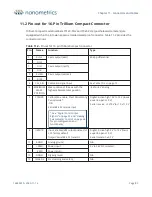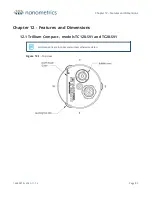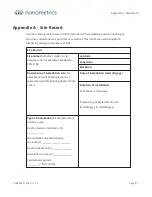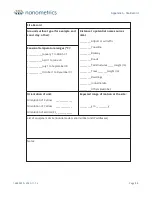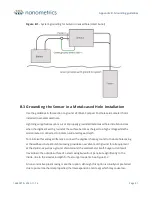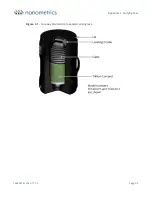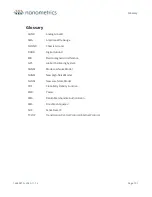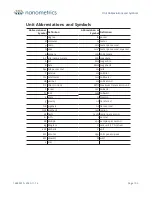
Appendix B - Grounding guidelines
In a station system consisting of multiple pieces of equipment with power, signal, and ground
connections running between them, the differences in ground potential must be considered
and managed to minimize noise and to minimize the risk of damage due to lightning surge.
Trillium Compact seismometers and Centaur digitizers are designed for high immunity to
ground voltages, with isolated power inputs, differential signalling for noise immunity, and
internal surge protection circuitry. The protection circuitry has been tested to withstand a
simulated lightning surge applied between the case grounds of the sensor and digitizer, with a
peak voltage of 1000 Volts and a pulse duration of 50 microseconds. In addition, the power
input to the Centaur is surge protected up to 2000 Volts for 50 microseconds.
Nevertheless, it is important to set up a correct grounding scheme that minimizes ground
potential differences to ensure the best possible noise performance and highest immunity to
lightning surge.
This section provides a general grounding scheme and guidelines for grounding a Trillium
Compact seismometer in a metal-cased hole, an uncased hole, or in a vault installation or test
lab.
B.1 Grounding Scheme
All electronic devices at the site should have a low-impedance (1 ohm or less) ground
connection to a single earth ground point. Nanometrics cables provide a low-impedance
connection from the case ground of each piece of equipment to the digitizer via the cable
shield braid. The case of the digitizer should be connected to earth ground via a short, low-
impedance cable. The earth ground may be a ground stake or buried screen, a metal borehole
casing, or the sensor itself in a direct burial installation.
This grounding scheme minimizes ground voltage differences between separate pieces of
equipment. As long as there is a low-impedance connection to a single main earth ground,
incidental contact of equipment with the earth at other points is usually of little or no
consequence. However, additional isolation and surge protection measures may be needed in
exceptional circumstances such as if pieces of equipment at the surface are too widely
Appendix B - Grounding guidelines
16889R10 • 2020-11-12
Page 89






